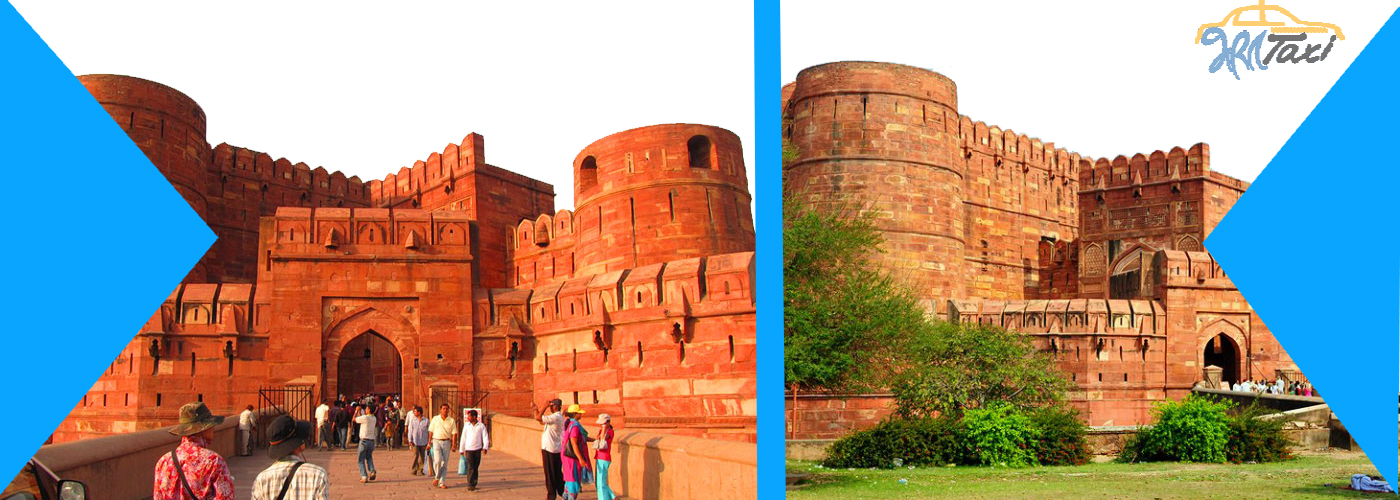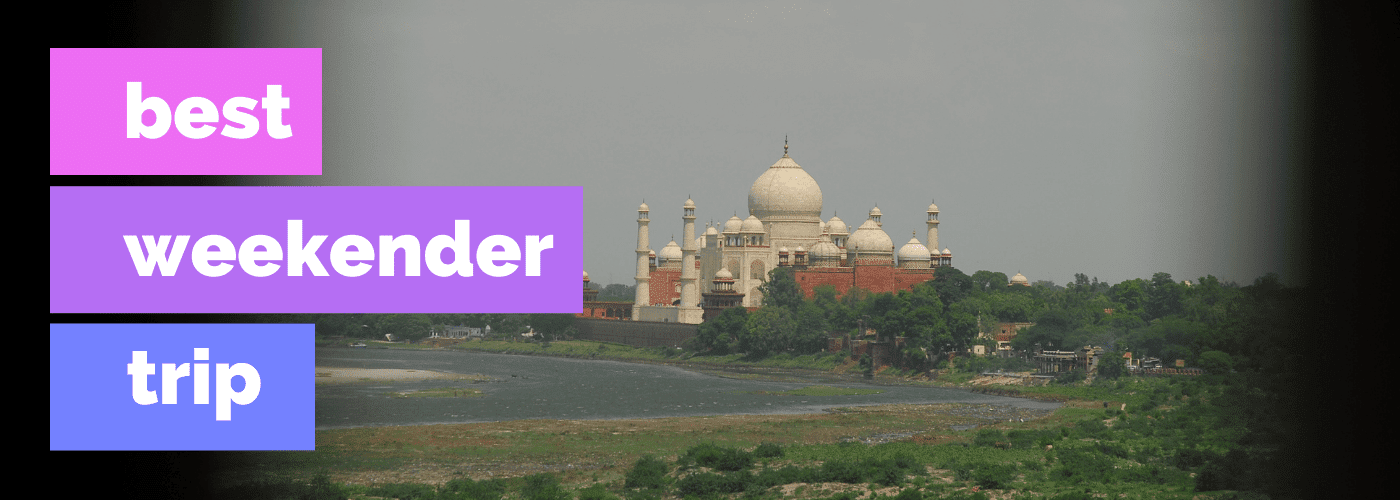Last Updated on October 22, 2020 by admin
Welcome to the bubble of Indian history that represents the glorious rule of the Mughal Empire. The Mughals ruled in India for nearly 250 years, and during this time they built some amazing structural monuments. One of the finest structures during their rule was the construction of the Agra Fort. It took almost 95 years to build this amazing architectural monument.
The history of Agra Fort has been very ancient and glorious. From Rajput king Jaipal to Mahmud Ghaznavi, Sikandar Lodi and Ibrahim Lodi ruled over this fort, but Babur defeated Ibrahim Lodi in the First Battle of Panipat in 1526 and laid the foundation of the Mughal Empire in India. And, he established his authority over the fort of Agra. After Humayun, Sher Shah Suri came to this fort and after some time again the Mughal authority came to this fort. After the Mughals, this fort was ruled by Maratha and British Empire. This fort was also called ‘Badalgarh’. Akbar was the successor after Humayun during the Mughal reign. He rebuilt the fort with red sandstone from 1558 to 1583. During the reign of Shah Jahan, the construction of many buildings continued with white marble stones. Thus, it took 95 years to complete it.
Agra City and Agra Fort
 From Humayun to Akbar, Jahangir, Shah Jahan, and Aurangzeb, it was Agra fort from there they used to carry out their political and social activities. This huge and powerful fort built of red sandstone and a white marble stone tells the glorious history of the Mughals. It was one of the most powerful and beautiful fortifications of the time. Being made of red sandstone, it is also called the Red Fort of Agra. In earlier times the fort was constructed to protect the city. But the fort of Agra was constructed for the protection of the city as well as the residence of the Raj families.
From Humayun to Akbar, Jahangir, Shah Jahan, and Aurangzeb, it was Agra fort from there they used to carry out their political and social activities. This huge and powerful fort built of red sandstone and a white marble stone tells the glorious history of the Mughals. It was one of the most powerful and beautiful fortifications of the time. Being made of red sandstone, it is also called the Red Fort of Agra. In earlier times the fort was constructed to protect the city. But the fort of Agra was constructed for the protection of the city as well as the residence of the Raj families.
The finest underground drains were constructed in this fort for drainage of water. The Red Fort of Agra is famous all over the world for its royal life, studded with prized stones and carving on the walls with layers of gold. During the British era, these walls were set on fire and melted away the layers of gold, taking them with them. For the protection of the fort, wide and high walls were built around the fort.
Agra Fort as World Heritage
It is a wonderful piece of architecture that attracts as tourist places in Agra. Seeing the beauty and strength of this fort, it was included in the UNESCO World Heritage Sites. The ‘Aga Khan Award’ for architecture was given to the Fort of Agra in 2004. Abul Fazl described the Red Fort as one of his inscriptions also wrote that this fort had about five hundred beautiful buildings built in Bengali and Gujrati style. Many of these buildings were demolished by the British to build their cantonment.
The ‘Takht-e-Taus’, or the Peacock Throne, ornamented with precious diamond jewels made by Shah Jahan, was placed in the Diwan-i-Aam of Agra Fort, which was later installed in the Red Fort in Delhi. Due to the unprecedented progress and prosperity in the field of Indian civilization – culture, agriculture, trade, the justice system, and architecture during Shah Jahan’s reign, his reign is called the ‘Golden Age’. The Diwan-i-Aam and Diwan-i-Khas are centers of attraction for tourists located on the premises of the fort. If you are a history lover then this fort is a good option for you. 25 percent of this fort was used as a residence for the royal families and 75 percent for the military camp.
Thus the fort of Agra was used in both palace and fortification forms. Even today 75 percent of this fort is used as a military cantonment. In terms of history, the Red Fort of Agra is one of the important Kilas of India, which retains the glorious history of the Mughal era even today.
1- Diwan-e-Aam: –
Diwan-e-Aam was built by Shah Jahan to talk to the public and listen to his complaints. In the Diwan-i-Am itself, Shah Jahan used to sit on the Peacock throne as an auditorium to listen to the sufferings of his people and their complaints. He was called a just ruler because of his fair justice system. Its specialty is that it is made of 49 pillars and the white marble is best carved on those pillars.
2- Diwan-i-Khas: –
Like Diwan-i-Aam, this monument is also known for its exquisite architecture made of white marble. But this monument used to be opposite to Diwan-i-Aam. Shah Jahan used the Diwan-i-Khas for his special high officials, ministers, and ambassadors.
3- Sheesh Mahal: –
The Sheesh Mahal of Agra was built in 1731 AD by Mughal emperor Shah Jahan for his beloved wife Mumtaz to change the bath and royal clothes. The reason for this being made of high-quality glass pieces was sparkled only by the light of a candle. The government has closed it for tourists due to the local people uprooting piece of glass stained in this memorial.
4- Anguri Bagh: –
In 1737 AD, Shah Jahan built Angoori Bagh in front of Khas Mahal. It is also called an 84 square meter, geometrically managed garden. Anguri Bagh is a beautiful garden made of red sandstone. Grapes were cultivated in this garden, and the grapes produced from it were used to make wine for Shah Jahan.
5- Musamman Burj: –
Musamman literally means Octagon and Burj literally means pillar or tower. The Musamman Burj (octagonal pillar), made of white marble, was used as a window. From this window, Shah Jahan used to look at the Taj Mahal. Aurangzeb kept his father Shah Jahan captive for 8 years in the Musamman Burj itself.
6- Nagina Mosque: –
Shah Jahan built the Nagina Mosque in its fort to offer prayers for the women of his harem. This memorial has the construction with white marble that beauty still intact today. Meena Bazaar also organized inside it where only women could sell in Meena Bazaar.
7- Jahangir Mahal: –
Akbar built this building for his beloved son Jahangir. This monument made of red sandstone is a classic example of architecture. It is a center of attraction among tourists due to its beautiful structure and grandeur.
8- Jahangir’s Hauz: –
Jehangir used this Hauz to bathe in his childhood. Jahangir’s maternal uncle gifted this Hodge in his childhood. The main feature of this Hauz is that it is made from a single stone without any joint.
There are many more beautiful monuments in Agra’s Red Fort. Such as the Golden Pavilion, Khas Mahal, Fish House, Moti Masjid, Naubat Khana, Rang Mahal, and Shah Jahan Mahal etc.
The entry fee for visiting the fort is 35/- for Indians and 550/- for foreigners.
Opening time – 6 am
Closing time – 6 pm


